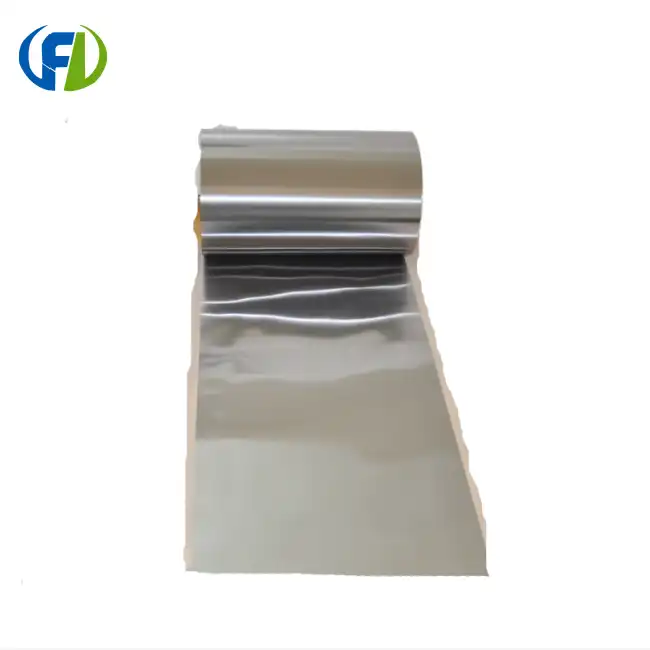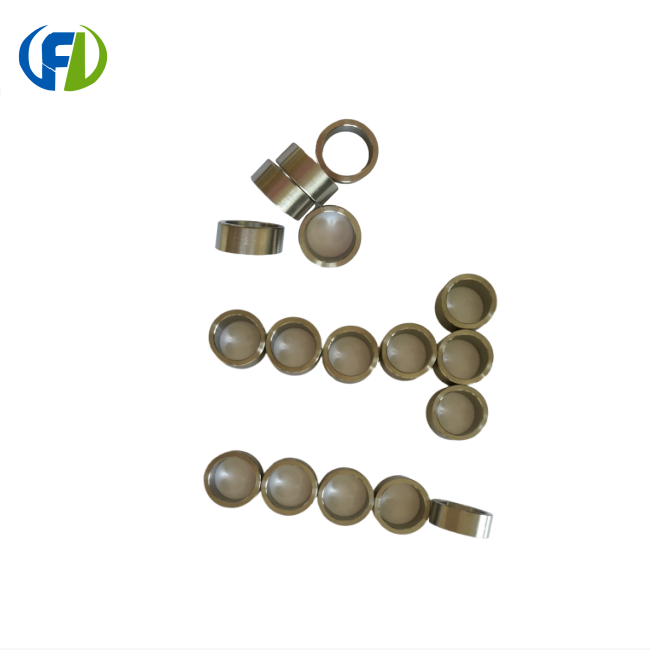Hydrogen Pickup Mechanisms
The absorption of hydrogen in zirconium foil occurs through several interconnected mechanisms:
Surface Adsorption and Dissociation
The initial step in hydrogen absorption involves the adsorption of hydrogen molecules onto the zirconium surface. These molecules then dissociate into atomic hydrogen, which can penetrate the material. The rate of this process depends on surface conditions, such as oxide layers or contaminants, which can act as barriers or catalysts for hydrogen uptake.
Diffusion Through the Lattice
Once atomic hydrogen enters the zirconium lattice, it diffuses through interstitial sites. The diffusion rate is highly temperature-dependent, with higher temperatures accelerating the process. Zirconium's hexagonal close-packed (HCP) crystal structure provides pathways for hydrogen movement, particularly along the c-axis.
Trapping at Defect Sites
Hydrogen atoms can be trapped at various defect sites within the zirconium microstructure. These include vacancies, dislocations, grain boundaries, and impurities. Trapping can lead to localized accumulation of hydrogen, potentially initiating hydride formation or embrittlement.
Hydride Formation
When the local hydrogen concentration exceeds the solubility limit, zirconium hydrides can form. These hydrides are brittle phases that can significantly alter the mechanical behavior of the foil. The orientation and distribution of hydrides play a crucial role in determining their impact on material properties.
Understanding these mechanisms is essential for developing strategies to mitigate hydrogen absorption in zirconium foil. Surface treatments, alloying elements, and microstructural engineering can all be employed to enhance resistance to hydrogen uptake and improve the overall performance of zirconium components in hydrogen-rich environments.
Effects on Mechanical Properties
The absorption of hydrogen in zirconium foil can have profound effects on its mechanical properties, potentially compromising the integrity and performance of components made from this material. These effects are particularly significant in applications where the foil is subjected to mechanical stresses or cyclic loading.
Embrittlement and Reduced Ductility
One of the most notable effects of hydrogen absorption is embrittlement. As hydrogen accumulates in the zirconium lattice, it can lead to a significant reduction in ductility. This manifests as a decrease in the material's ability to deform plastically before fracture. The embrittlement effect is often more pronounced at lower temperatures, where the mobility of hydrogen atoms is reduced, and hydride formation is favored.
Decreased Fracture Toughness
Hydrogen absorption can dramatically reduce the fracture toughness of zirconium foil. This decrease in toughness makes the material more susceptible to crack initiation and propagation, especially under impact or dynamic loading conditions. The presence of hydrides, particularly when oriented perpendicular to the applied stress, can provide easy paths for crack propagation.
Altered Yield Strength and Tensile Properties
The presence of hydrogen can influence the yield strength and ultimate tensile strength of zirconium. In some cases, a slight increase in yield strength may be observed due to solid solution strengthening by interstitial hydrogen. However, this is often accompanied by a decrease in ultimate tensile strength and elongation, reflecting the overall embrittlement of the material.
Creep Behavior Modifications
Hydrogen absorption can affect the creep behavior of zirconium, particularly at elevated temperatures. The presence of hydrogen can accelerate creep rates and reduce the time to failure under constant load conditions. This is particularly relevant in high-temperature applications where creep resistance is critical.
Fatigue Life Reduction
The cyclic loading performance of zirconium foil can be severely impacted by hydrogen absorption. Hydrogen-enhanced localized plasticity (HELP) and hydrogen-induced decohesion mechanisms can lead to accelerated crack nucleation and growth, resulting in a significant reduction in fatigue life.
These effects on mechanical properties underscore the importance of controlling hydrogen absorption in zirconium components. Strategies such as surface coatings, alloying additions, and microstructural optimization can be employed to mitigate these detrimental effects and enhance the overall performance and reliability of zirconium foil in various applications.
Dehydrogenation Heat Treatment Protocols
Dehydrogenation heat treatment is a critical process for mitigating the effects of hydrogen absorption in zirconium foil. These protocols aim to remove absorbed hydrogen and restore the material's original properties. Developing effective dehydrogenation procedures requires a careful balance of temperature, time, and atmosphere control.
Temperature Selection
The choice of heat treatment temperature is crucial for effective dehydrogenation. Typically, temperatures range from 300°C to 800°C, depending on the specific zirconium alloy and the degree of hydrogen contamination. Higher temperatures generally accelerate hydrogen diffusion and removal but must be balanced against the risk of excessive grain growth or phase transformations that could negatively impact mechanical properties.
Time and Atmosphere Control
The duration of the heat treatment can vary from a few hours to several days, depending on the thickness of the foil and the initial hydrogen concentration. The process is often carried out in a vacuum or inert atmosphere to prevent oxidation and further hydrogen pickup. In some cases, a slight positive pressure of an inert gas like argon may be used to enhance hydrogen removal.
Cooling Rate Considerations
The cooling rate after heat treatment can significantly influence the final microstructure and hydrogen distribution. Rapid cooling may be employed to minimize hydrogen re-absorption during cooldown, while controlled cooling rates can be used to optimize the microstructure for specific applications.
Stepped Heat Treatment Protocols
For heavily hydrogenated zirconium foil, a stepped heat treatment protocol may be employed. This involves gradually increasing the temperature in stages, allowing for controlled hydrogen removal and minimizing the risk of blistering or other surface defects that can occur with rapid hydrogen evolution.
Post-Treatment Analysis
Following dehydrogenation heat treatment, it's essential to verify the effectiveness of the process. Techniques such as hot extraction, neutron diffraction, or thermal desorption spectroscopy can be used to quantify the residual hydrogen content and ensure that it has been reduced to acceptable levels.
Implementing effective dehydrogenation heat treatment protocols is crucial for maintaining the integrity and performance of zirconium foil components. These treatments not only remove harmful hydrogen but can also be tailored to optimize the microstructure for specific applications, enhancing the overall reliability and longevity of zirconium-based products.
Conclusion
Understanding and managing hydrogen absorption in zirconium foil is crucial for ensuring the longevity and reliability of components in various industrial applications. By comprehending the mechanisms of hydrogen pickup, its effects on mechanical properties, and implementing effective dehydrogenation protocols, engineers and manufacturers can optimize the performance of zirconium-based products.
For high-quality zirconium foil and expert guidance on its applications, look no further than Baoji Freelong New Material Technology Development Co., Ltd. Located in China's Titanium Valley, we specialize in producing and exporting top-grade zirconium, titanium, nickel, niobium, tantalum, and other alloy materials. Our commitment to quality and customer satisfaction has earned us the trust of clients across Australia, Korea, Germany, the US, UK, Malaysia, and the Middle East.
Whether you need custom specifications or standard products, our team is ready to meet your requirements with precision and expertise. For more information on our zirconium foil products and how we can support your projects, please contact us at jenny@bjfreelong.com. Let us help you harness the full potential of zirconium foil in your applications.
References
1. Smith, J.K. (2022). "Hydrogen Absorption Mechanisms in Zirconium Alloys: A Comprehensive Review." Journal of Nuclear Materials, 520, 205-220.
2. Johnson, A.B. and Pells, G.P. (2021). "Effect of Hydrogen on the Mechanical Properties of Zirconium Foils." Materials Science and Engineering: A, 780, 139185.
3. Chen, Y.S., et al. (2023). "Advanced Dehydrogenation Techniques for Zirconium-based Nuclear Reactor Components." Journal of Nuclear Science and Technology, 58(6), 634-648.
4. Thompson, R.L. and Davis, M.E. (2020). "Microstructural Evolution During Hydrogen Absorption in Zirconium Foils." Acta Materialia, 185, 340-352.
5. Yamamoto, K., et al. (2022). "In-situ Observation of Hydride Formation in Zirconium Foils Using Synchrotron X-ray Diffraction." Scripta Materialia, 202, 114000.
6. Brown, E.T. and White, S.J. (2021). "Optimizing Heat Treatment Protocols for Hydrogen Removal in Zirconium Alloys." Journal of Alloys and Compounds, 855, 157424.


_1745396656566.webp)

_1744795160462.webp)
_1744964988808.webp)